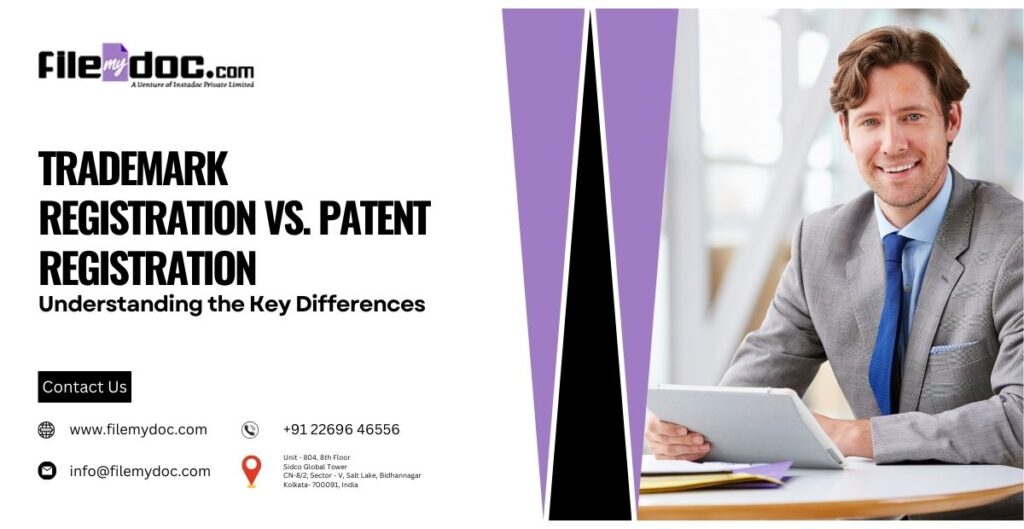Trademark Registration vs. Patent Registration: Understanding the Key Differences
In the dynamic landscape of intellectual property (IP) law, understanding the distinctions between trademark registration and patent registration is crucial. Both mechanisms serve to protect unique creations, yet they operate under distinct frameworks and cater to different types of intellectual assets.




Key Differences Between Trademark Registration and Patent Registration
1. Nature of Protection:
Trademarks primarily safeguard brand identities, including logos, symbols, names, and slogans, that distinguish goods and services in the marketplace. Conversely, patents protect inventions or discoveries, granting exclusive rights to the inventor for a specified period.
2. Scope of Coverage:
Trademark protection extends to products or services bearing the mark, aiming to prevent consumer confusion and ensure brand integrity. On the other hand, patents offer broader protection, prohibiting others from making, using, selling, or importing the patented invention without authorization.
3. Duration of Protection:
Trademark rights can potentially last indefinitely, provided the mark remains in use and renewal requirements are met. In contrast, patent protection typically lasts for a limited period, usually 20 years from the date of filing, after which the invention enters the public domain.
4. Requirements for Registration:
Trademark registration necessitates the mark to be distinctive, non-generic, and used in commerce to signify the source of goods or services. Patent registration, however, demands the invention to be novel, non-obvious, and industrially applicable, requiring a detailed description of the innovation’s functionality and utility.
5. Application Process:
Trademark registration involves filing an application with the relevant IP office, accompanied by specimens demonstrating the mark’s use in commerce. Patent registration entails submitting a comprehensive patent application disclosing the invention’s technical details, followed by a rigorous examination process to assess novelty and inventiveness.
Conclusion
In conclusion, while both trademark registration and patent registration offer valuable protections for intellectual property assets, they serve distinct purposes and adhere to different criteria. Businesses and inventors must carefully assess their objectives and the nature of their creations to determine the most appropriate form of IP protection. By understanding the nuances between trademarks and patents, stakeholders can navigate the complexities of IP law more effectively and safeguard their innovations in the competitive marketplace.


















